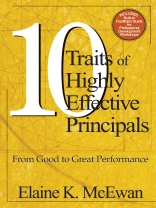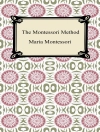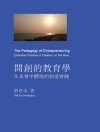‘I feel that this is a book that principals will be interested in purchasing and reading. It has practical advice and relevant examples of how the advice can and has been implemented.’
Phillip Silsby, Principal
Belleville West High School, Belleville, IL
‘I could hear the voices of some of the principals who were interviewed speaking to me. The author clearly knows how to gather information and present it in a meaningful way.’
Bonnie Tryon, Zone 2 Director
National Association of Elementary School Principals
‘This is a powerful guidebook for new principals. More than that, it also contains valuable insight and examples to assist veteran principals in growing and improving professionally.’
Kimberly Kay Janisch, Principal
Watertown High School, Watertown, SD
How can principals raise achievement levels, energize teachers, and get results? How can you remain productive and effective in this age of accountability?
Highly effective principals have strong communication skills, high levels of knowledge about teaching and learning, and the ability to provide instructional leadership. This excellent, new resource provides principals, administrative teams, and educators with tremendous resources to hone these skills and traits.
Ten Traits of Highly Effective Principals contains ideas, reflections, behaviors, habits, and stories from the trenches to guide and inspire as you seek to increase your own effectiveness. Each chapter in this resource describes an essential component of personal effectiveness. A highly effective principal is
Transform your school into a community of learners, set high academic and behavioral expectations, and create a culture where children feel special and safe.
Table des matières
Preface
Who This Book Is For
Overview of the Contents
Acknowledgments
Introduction
A Matter of Defintion
The Origin of the Ten Traits
The Ten Traits of Highly Effective Principals
Chapter 1: The Communicator
Chapter 2: The Educator
Chapter 3: The Envisioner
Chapter 4: The Facilitator
Chapter 5: The Change Master
Chapter 6: The Culture Builder
Chapter 7: The Activator
Chapter 8: The Producer
Chapter 9: The Character Builder
Chapter 10: The Contributor
About the Author
Dedication
1. The Communicator
Communicator Exemplar: Michelle Gayle
Communicator Benchmarks
1.1 Communicators Attend
1.2 Communicators Listen
1.3 Communicators Empathize
1.4 Communicators Disclose Themselves to Others
1.5 Communicators Get the Whole Story
1.6 Communicators Ask the Right Questions
1.7 Communicators Say What They Mean and Mean What They Say
1.8 Communicators Can Acceptn Criticism
1.9 Communicators Can Give Correction
1.10 Communicators Communicate Creatively
1.11 Communicators Disagree Agreeably
1.12 Communicators Pay Attention to Parents
1.13 Communicators Connect Emotionally and Professionally With Staff
1.14 Communicators Communicate With Students
1.15 Communicators Can Talk to the Boss
1.16 Communicators Connect in Productive, Helping, and Healing Ways
1.17 Communicators Care Enough to Send the Very Best
1.18 Communicators Know How to Schmooze
1.19 Communicators Write, Speak, and Teach
Summing It Up
2. The Educator
Educator Exemplar
Jean Hendrickson, Elementary
Educator Exemplar: Alan Jones, High School
Educator Benchmarks
2.1 Educator Principals Believe That All Students Can Learn, and They Develop Programs to Help Them Succeed
2.2 Educator Principals Provide Training and Support for Teachers
2.3 Educator Principals Create Cognitive Dissonance
2.4 Educator Principals Establish, Implement, and Achieve Academic Standards
2.5 Educator Principals Focus on Instruction
2.6 Educator Principals Model Continuous Learning
2.7 Educator Principals Develop Teacher Leaders
2.8 Educator Principals Pay Attention to What Matters Most
2.9 Educator Principals Create Learning Communities
Summing It Up
3. The Envisioner
Envisioner Exemplar: Larry Fieber
Envisioner Benchmarks
3.1 Envisioners Are Hedgehogs
3.2 Envisioners Feel Called
3.3 Envisioners Have Resolve, Goals, and Lifevision
3.4 Envisioners Can See the Invisible
3.5 Envisioners Know Where They Are Headed
3.6 Envisioners Have Compelling Visions
3.7 Envisioners Can Articulate Their Visions and Then Make Them Happen
Summing It Up
4. The Facilitator
Facilitator Exemplar: Doug Pierson
Facilitator Benchmarks
4.1 Facilitator Principals Bond People Into a Community of Leaders
4.2 Facilitator Principals Tap the Potential of People
4.3 Facilitator Principals Say ‘We’ Instead of ‘I’
4.4 Facilitator Principals Favor People Over Paperwork
4.5 Facilitator Principals Build Up Emotional Bank Accounts
4.6 Facilitator Principals Cultivate Their Own Well-Being
4.7 Facilitator Principals Value Diversity
4.8 Facilitator Principals Share the ‘Power Pie’
4.9 Facilitator Principals Accentuate the Positives
4.10 Facilitator Principals Promote Parental Involvement
4.11 Facilitator Principals Celebrate
4.12 Facilitator Principals Spend Time With Students
Summing It Up
5. The Change Master
Change Master Exemplar: Marjorie Thompson
Change Master Benchmarks
5.1 Change Masters Can Handle Uncertainty and Ambiguity
5.2 Change Masters Respect Resisters
5.3 Change Masters Are Futuristic
5.4 Change Masters Use a Situational Approach
5.5 Change Masters Know That the Power Is Within
5.6 Change Masters Value the Process
5.7 Change Masters Plan for Short-Term Victories
5.8 Change Masters Procure Resources
5.9 Change Masters Trust Their Teams
5.10 Change Masters Are Willing to Change Themselves
5.11 Change Masters Are Motivators
5.12 Change Masters Understand the Change Process
Summing It Up
6. The Culture Builder
Culture Builder Exemplar: Gabe Flicker
Culture Builder Benchmarks
6.1 Culture Builders Understand and Appreciate the Power of Culture
6.2 Culture Builders Know What a Good Culture Looks Like
6.3 Culture Builders Facilitate the Development of Core Values
6.4 Culture Builders Communicate These Values Clearly
6.5 Culture Builders Reward and Cheer Those Who Support and Enhance the Culture
6.6 Culture Builders Build Cultures That People Choose
6.7 Culture Builders Know the Small Stuff Is Really the Big Stuff
Summing It Up
7. The Activator
Activator Exemplar: Clare Maguire
Activator Exemplar: Todd White
Activator Benchmarks
7.1 Activators Mobilize People
7.2 Activators Are Entrepreneurial
7.3 Activators Don′t Wait to Be Told
7.4 Activators Are Risk Takers
7.5 Activators Ask for Forgiveness Rather Than Permission
7.6 Activators Run to Daylight
7.7 Activators Don′t Micromanage
7.8 Activators Make Things Happen
7.9 Activators Are Outrageous
7.10 Activators Are Cheerleaders
Summing It Up
8. The Producer
Producer Exemplar: Dale Skinner
Producer Benchmarks
8.1 Producers Believe That Achievement Is the Bottom Line
8.2 Producers Never Mistake Activity for Achievement
8.3 Producers Are Data Driven
8.4 Producers Pay Attention to Individual Students
8.5 Producers Have Academically Focused Missions
8.6 Producers Make Research-Based Decisions
8.7 Producers Hold Teachers Accountable
Summing It Up
9. The Character Builder
Character Builder Examplar: Tom Paulsen
Character Builder Benchmarks
9.1 Character Builders Are Human
9.2 Character Builders Are Trustworthy
9.3 Character Builders Have Integrity
9.4 Character Builders Are Authentic
9.5 Character Builders Are Respectful
9.6 Character Buliders Are Generous
9.7 Character Builders Are Humble
9.8 Character Builders Hire Staff Members With Character
9.9 Character Builders Are Consistent
9.10 Character Builders Lead by Example, Not by Exhortation
9.11 Character Builders Seek to Develop the Character of Students
Summing It Up
10. The Contributor
Contributor Exemplar: Lola Malone
Contributor Benchmarks
10.1 Contributors Lead by Serving Others
10.2 Contributors Are Self-Aware and Reflective
10.3 Contributors Are Good Stewards
10.4 Contributors Have Strong Wills
Summing It Up
Conclusion
Professional Conclusions
How Can You Use This Book
Resource A: List of Contributing Highly Effective Principals
Resource B: Ten Traits of Highly Effective Principals
Resource C: Complete List of Benchmarks
References
Index
Facilitators Guide
Who Should Use This Guide?
How Is the Guide Organized?
What Materials Are Needed?
Study Modules
Introduction
A propos de l’auteur
Elaine K. Mc Ewan is an educational consultant with The Mc Ewan-Adkins Group, offering professional development for educators to assist them in meeting the challenges of literacy learning in Grades Pre K-6. A former teacher, librarian, principal, and assistant superintendent for instruction in several suburban Chicago school districts, Elaine is the award-winning and best-selling author of more than three dozen books for educators. Her Corwin Press titles include Raising Reading Achievement in Middle and High Schools: Five Simple-to-Follow Strategies for Principals, Second Edition (2006), Seven Strategies of Highly Effective Readers: Using Cognitive Research to Boost K-8 Achievement (2004), Ten Traits of Highly Effective Principals: From Good to Great Performance (2003), Making Sense of Research: What’s Good, What’s Not, and How to Tell the Difference (2003), Seven Steps to Effective Instructional Leadership, Second Edition (2003), Teach Them ALL to Read: Catching the Kids Who Fall through the Cracks (2002), and Ten Traits of Highly Effective Teachers: How to Hire, Mentor, and Coach Successful Teachers (2001). Mc Ewan was honored by the Illinois Principals Association as an outstanding instructional leader, by the Illinois State Board of Education with an Award of Excellence in the Those Who Excel Program, and by the National Association of Elementary School Principals as the National Distinguished Principal from Illinois for 1991. She received her undergraduate degree in education from Wheaton College and advanced degrees in library science (MA) and educational administration (Ed D) from Northern Illinois University.












